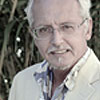Dr. Thorium or: How I Learned to Stop Worrying by Killing the Bomb
An Interview with Patrick Cox by WYPR’s Midday with Dan Rodricks
Dan Rodricks, Host, Midday: I’m Dan Rodricks, and you’re listening to a special edition of Midday we call Power Ahead: The Energy Future. We continue our discussion about nuclear power with a specific look at something of international public concern since the tsunami hit Japan. Can even an advanced economy master nuclear power safely? Can nuclear power be safely harnessed?
I’d like now to introduce Patrick Cox to our program. Patrick Cox is an editor with Baltimore-based Agora Financial, our lead collaborator for Power Ahead. Patrick Cox is the editor of Breakthrough Technology Alert, keeping an eye on transformational technologies for investors…
We want to talk to Patrick Cox about thorium nuclear power… Please tell us about thorium nuclear power and the big picture of nuclear renaissance.
Cox: It’s interesting because in the early days of nuclear power, there were two schools. One was the current technology of light water reactors that produce plutonium, which is weaponizable. As a matter of fact, that’s why that technology was chosen, because the military wanted this plutonium in order to build the nuclear stockpile that we all know about. On the other hand, we had people like Edward Teller, who was slandered in Dr. Strangelove, and his friend Alvin Radkowsky, who was the world’s leading reactor designer, who very much were opposed to plutonium-producing nuclear power and wanted to go the direction of thorium.
And thorium has numerous innate advantages. One is that it doesn’t produce weaponizable byproducts, but it’s also true that the nature of the metal is such that it produces safer reactors. It burns at a lower temperature, and there’s also a great deal of it. As a matter of fact, there’s more energy available easily in thorium than there is in uranium, petroleum and coal combined. There’s just an enormous amount of this stuff.
Rodricks: Why isn’t it used now if it’s safer?
Cox: We have this enormous regulatory bureaucracy. If you know anything about the SEC, if you know anything about drug development and how difficult it is to get a drug into the market, that’s easy compared to nuclear reactor design. This is an international agency with huge armed tentacles everywhere, and it’s influenced by the existing players. But it’s happening outside of the United States anyway. If you go to the French, they are developing and have now signed an agreement with Lightbridge, which is the company that was founded initially by Alvin Radkowsky. They’re working on thorium.
The Red Star Russian reactor designer, which serves most of Asia, is working on thorium… There are lots of thorium reactors running, and there are lots of different strategies for bringing thorium into the mix… The thing to remember is that thorium requires an extra neutron to work. In order to create fuel, you have to add a neutron. If you stop adding the neutron, then the reaction stops.
Rodricks: So that’s what gets you to that term I heard you use a little while ago, “meltdown-proof.”
Cox: Right. And there are many different ways of doing that.
Rodricks: So the problems we’re seeing at Fukushima Daiichi, then, with those reactors, is water reactors. So you could see where maybe the world looks at that and then looks at thorium and says maybe we ought to go with thorium?
Cox: It’s inevitable.
Rodricks: Could you put thorium in 104 US nuclear power plants and make them all safer? I mean, could you transition to that?
Cox: Yes. As a matter of fact, Lightbridge (NASDAQ:LTBR) is the leader in this technology. It is consulting with the Gulf states, with the French, the Russians, and probably will end up consulting with the Indians and the Chinese, as well. There are many different strategies for getting thorium into the fuel stream. Some of them are as simple as dropping a different fuel rod into the existing light water reactors, which would somewhat improve safety, though in the long run – I think the thing we should realize is these reactors in Japan were 40 years old.
I mean, you don’t drive a car that’s 40 years old. They had made some serious mistakes. Seth Grae, the CEO of Lightbridge, points out that the backup systems on these reactors were all on one circuit, which is absurd. It’s mind-boggling that people who are known for their technical competence had done something that stupid. I mean, the problem of what we really need to do in terms of safety is to move to the next generation of nuclear reactors, which are going to be an order of the magnitude safer than what we have now operating in Japan, in the United States. There are thorium reactors running right now in Russia. I mean, they’re going to go online in the next two years. They’re going to be sold.
Regards,
Patrick Cox from his interview with Midday’s Dan Rodricks,
for The Daily Reckoning


Comments: